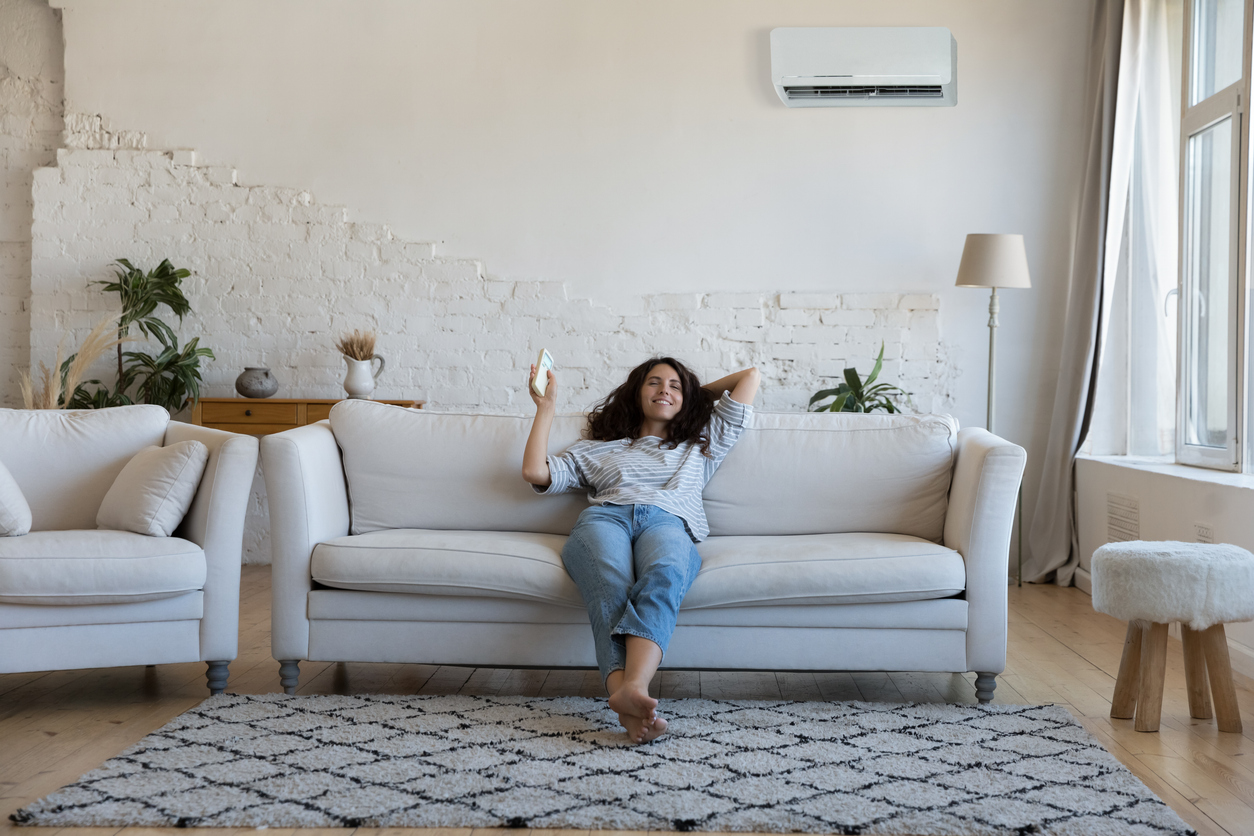
Eco-friendly cooling is a wonderful way to make your home comfortable while reducing both your power bill and your carbon footprint. What most people don’t know is that there are many different ways to improve the energy efficiency and eco-friendliness of your cooling system. Join us on a tour of the ten best sustainable or eco-friendly HVAC options for keeping your home cool in the summer.
1) High-Efficiency Air Conditioners
The more efficiently your HVAC uses electricity, the less power you need. This reduces your summer energy bill and the demand for power from plants that burn fossil fuels – as most US power plants do. Look for units with a high SEER rating. This stands for the Seasonal Energy Efficiency Ratio. The higher the SEER rating, the more energy-efficient the unit is.
Standard SEER2 ratings are around 14.3, while the most efficient units range from 16 to 24.
2) Geothermal Heat Pumps
Geothermal heat pumps are a fascinating and efficient way to cool your home. They use heat pump technology paired with the constant cool temperature that exists underground. 10 feet below ground, rocks and caverns tend to maintain consistent temperatures between 50 and 60 degrees F.
Geothermal heat pumps use pipes in the ground to convey that cool deep-earth temperature into your home without the use of fossil fuels. They offer significant energy savings over traditional HVAC systems.
3) Solar-Powered Air Conditioning
Solar-powered AC is one of the cleverest uses of small-scale home solar power. Your HVAC is paired directly with a few solar panels on the roof so that when the sun blazes the brightest and hottest, electricity is conveyed directly to power your AC.
Because summer AC generates the largest spike in demand for power from the grid (and the utility company), solar AC is a great way to save money while reducing both pressure and reliance on the neighborhood power grid. This is good for your home and helps to minimize rolling blackouts in areas with summer power troubles.
4) Ductless Mini-Split Systems
Ductless mini-split systems use the same technology as central air but with individual units in different rooms of the house. This also allows for highly efficient zone cooling, which means you can cool only the rooms that are in use, saving energy. If you often don’t use certain areas of your house during the day, you can close them off and only cool the rooms that are in use.
For example, you can cool the living room and kitchen during the day, but then only cool the bedrooms at night.
5) Natural Ventilation
One of the 10 eco-friendly HVAC options is natural ventilation. When the temperature is mild outdoors, you can take advantage of natural ventilation by strategically opening windows and using ceiling fans to circulate air throughout your home. A few well-placed shop fans can increase circulation and keep your home comfortable, especially on summer nights.
Tip: Repair and replace screen doors and window screens for natural breezes while keeping the flying creatures outdoors.
6) Energy Recovery Ventilation (ERV) Systems
Energy Recover Ventilation (ERV) systems are designed to cycle the cool area your home has already created. Combined with air filtration and careful addition of outside air, you can minimize energy lost in a typical system by only cooling already hot air from outdoors. The system transfers heat and moisture between incoming and outgoing air streams.
7) Smart Thermostats
A smart thermostat will help balance your household’s patterns and preferences with the most energy-efficient settings. It can adjust the temperature based on the weather when the house is empty, and when you require the most cooling during the day. For example, a smart thermostat may let the home warm up (but not overheat) while everyone is at work or school, then cool the house before the first person comes home to optimize energy usage.
8) Proper Maintenance
A well-maintained HVAC system is an efficient HVAC system. Regularly servicing your HVAC system ensures it operates at peak efficiency, reducing energy consumption and prolonging its lifespan. Be sure to keep a clean filter, have the coils wiped clear of dust regularly, and ensure older systems get a regular electrical and fan inspection to get the most energy-efficient performance each summer.
9) Insulation and Sealing
The better insulated your home, the more efficiently it will stay cold once the AC has done its job. Ensure your home is well-insulated and properly sealed to prevent cooled air from escaping, reducing the workload on your HVAC system.
Replace the weather stripping on doors and windows, have your attic re-insulated and the ventilation checked, have your ducts cleaned and gaps sealed, and place draft stoppers below closed doors if you are using zoned cooling.
10) Shade and Reflective Surfaces
Protecting your home exterior from direct sunlight is also a very efficient way to reduce your need for cooling, and therefore the energy needed. Planting trees for shade and using reflective roofing materials can also help reduce the heat absorbed by your home, lessening the need for constant cooling. A few awnings or a well-placed shady pavilion tent can work wonders – and make your outdoor spaces more pleasant.
By implementing one or more of these eco-friendly HVAC options, you can enjoy a comfortable summer while reducing your environmental impact. Kabran is here to help you achieve the most efficient and eco-friendly cooling solutions for your home. For expert AC services in Cocoa Beach, FL, and surrounding areas, contact us today!


